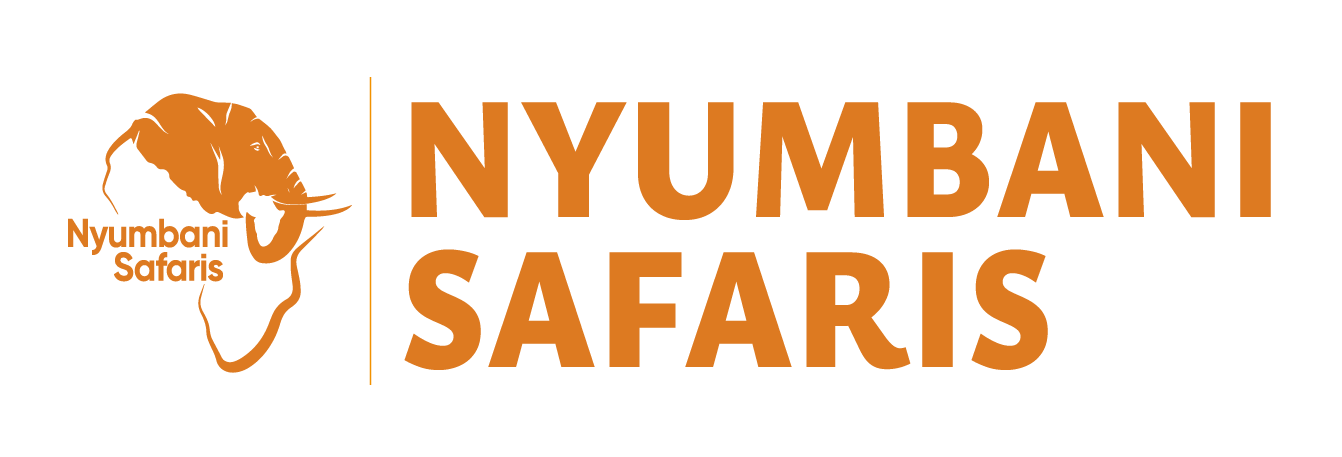Experience the Best of Tanzania
The Serengeti
The Serengeti plains are stomping ground of the 2 million strong Great Migration and home to the highest concentration of predators in Africa, Serengeti National Park is one of those rare places that exceeds your imagination. The concentration of game here is truly phenomenal. This is Big Five game viewing territory, in an authentic environment with no fences and little interruption from man – the huge herds following ancient migration routes embedded in their genes.
A Serengeti safari is far more than just a Great Migration park. There is a very good argument that, even if you took the great herds out of the Serengeti, you would still have the finest safari park in Africa. The Serengeti’s immense natural beauty and biodiversity has its drawbacks, with certain times of year and certain areas being honeypots for tourist attention. That said, one part is busy, another is quiet – there is always a part of the Serengeti you can make your own. A genuine contender for the best wildlife experience in Tanzania and in the world.
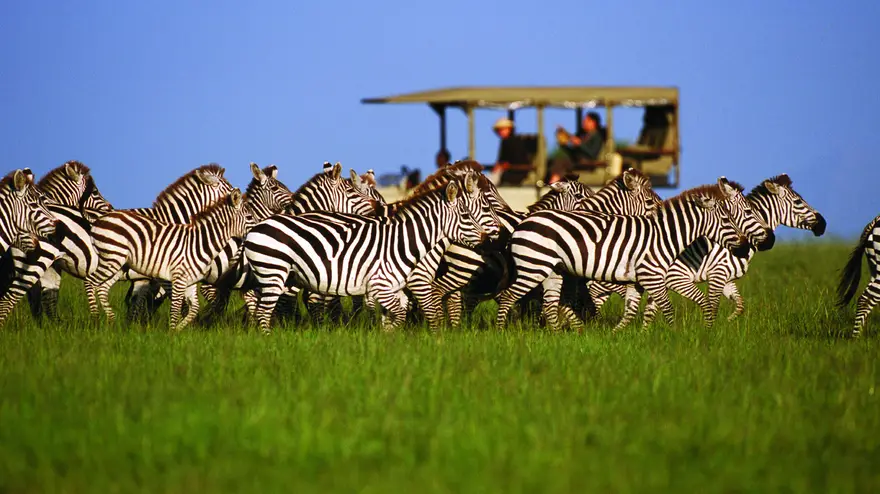
Ngorongoro Crater Safaris
The Ngorongoro Crater is one of the best places in Africa to see the Big Five (buffalo, lion, leopard, elephant and rhino). With approximately 70 lion, huge buffalo herds, 40 rhino and some of the largest tusker elephants left in Africa today, the only somewhat tricky Big Five sighting is leopard. As elusive as ever, nevertheless leopards can be found in the Lerai Forest and even seen openly on the Crater rim. As the Crater has 600m-high walls on all sides, it has created its own self-contained ecosystem. The vast majority of animals live in the Ngorongoro throughout the year, choosing not to migrate but to rely on the Crater’s remarkably fertile grazing grounds and water supply. As a result, game viewing is reliably brilliant throughout the year.
With its sprawling plains, soda lake and acacia woodland, it is well able to support a wealth of wildlife. For good reason, it is known as ‘the garden of Eden’ and ‘the cradle of life’! Cats that roam the Crater floor include plentiful prides of lion and leopard as mentioned, benefiting from the influx into the area of wildebeest, Burchell’s zebra and further game species throughout the winter months. In fact, the Crater boasts the highest density of lion worldwide! As mentioned above, leopard like to spend their days around the rim and can often be seen around the Lerai Forest. Cheetah numbers are very low, but the small population can often be sighted. The real prizes for cat lovers, however, are serval, caracal and golden cat. The last two are very rarely in evidence, but serval are often seen on game drives.
In addition to wildebeest and zebra, the Crater is home to black rhino, Grant’s and Thomson’s gazelles, eland, topi, spotted hyena, hartebeest, jackal, black-faced vervet, baboon and warthog! The lake and its tributaries attract hippopotamus, waterbuck and many other species, while the higher regions are populated by mountain reedbuck, Cape buffalo and elephant. The elephant numbers are not overwhelming, but some of the oldest and largest tuskers have taken up residency here. With tusks hitting the floor, it is well worth looking out for these exceptional creatures.
The birdlife is excellent in the Crater, with over 200 species to keep avid birdwatchers busy! A particularly spectacular sight is the congregation of vast numbers of common and dwarf flamingo in the Crater’s soda lake, feasting upon crustaceans and algae. The area has many raptors, such as marsh harrier, augur buzzard, black kite, tawny eagle and white-backed vulture. Other feathered beauties comprise avocet, hoopoe, black-bellied bustard, cattle egret, ostrich, fan-tailed widow-bird, grey-rumped swallow, little grebe, red-billed firefinch, speckled pigeon and wattled starling. Make sure you pack your binoculars!
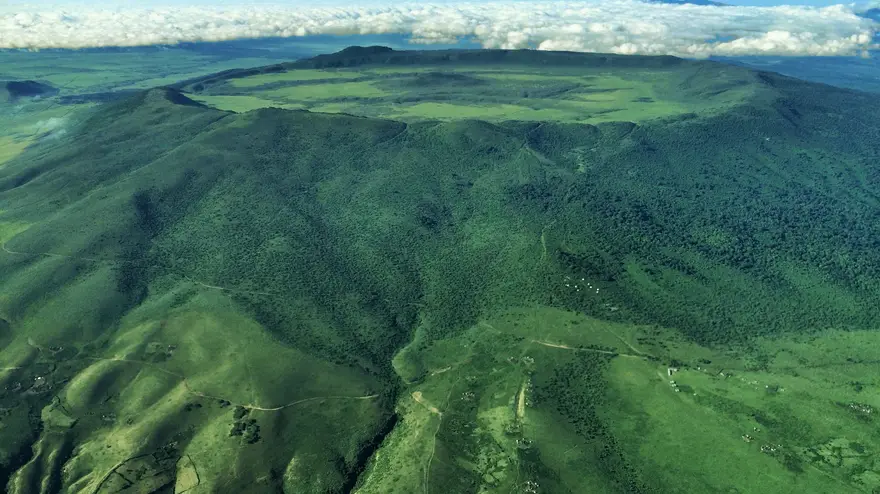
Ruaha National Park
In Ruaha the only missing member of the Big Five (lion, buffalo, elephant, leopard and rhino) is rhino – there have not been any in the park for years. There is no doubt that Ruaha is one of Africa’s finest destinations for big cats. The lion concentration here is as high as anywhere we know. A very strong lion population virtually goes hand in hand with healthy buffalo herds whilst Ruaha’s elephant herds are seriously impressive. Leopard are always found in the park with the majority of travellers seeing this elusive feline!
Ruaha is an outstanding safari park due to the fact the park showcases a crossover of East and Southern African species in terms of flora and fauna. One reason for the hordes of animals in Ruaha is the Great Ruaha River, a vital water source throughout the year but especially during the dry season. The reliability of the river owes much to the success of game drives in this region, as animals congregate predictably on the long shores. Lion live here in large prides, often numbering over twenty individuals! Leopard and cheetah love hunting on the open plains, while many smaller species are equally at home here – serval, caracal, civet, genet and banded wildcat. Cheetah are remarkably common making seeing the three main cat species very likely – something that’s rare anywhere in Africa nowadays.
Other mammals also thrive in Ruaha in abundance. The park’s elephant herds are absolutely humongous! Buffalo are plentiful too, as are zebra, giraffe, hippopotamus and an exciting assortment of antelope species such as roan, sable, eland, impala, gazelle, reedbuck, hartebeest, klipspringer – and the largest population of greater kudu in all East Africa! Predators, in addition to the cats, include black-backed jackal, spotted hyena and (less common) striped hyena. The park is also an important area for wild dog, hosting over a hundred dogs at last count.
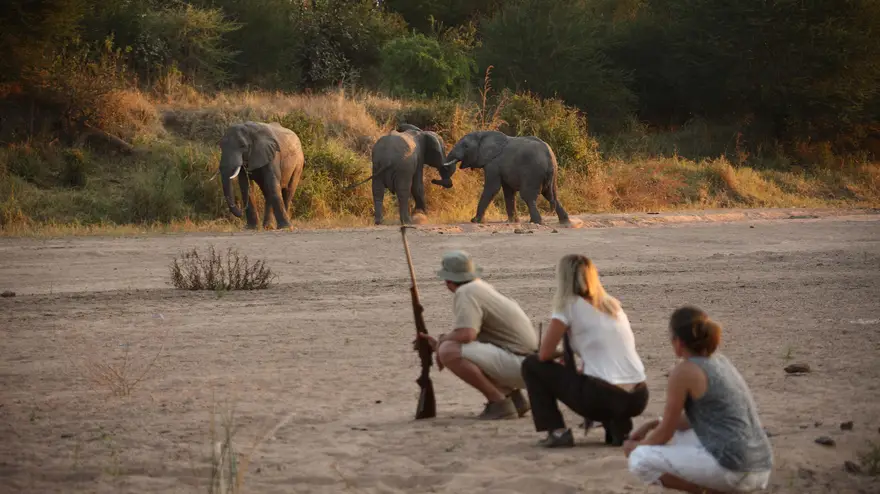
Zanzibar Holidays
The island’s capital, Zanzibar Town, is a hive of activity. This honeypot of local culture attracts tourists into its central ‘Stone Town’, a myriad of narrow streets where travellers explore the town’s compelling architecture, haggle at market stalls, and learn about the island’s fascinating history. A trip to the island is not complete without a night in Stone Town to appreciate the importance of this little place.
Located less than 20 minutes’ flight from mainland Tanzania, Zanzibar is a separate state within Tanzania, made up of Zanzibar Island itself and nearby Pemba Island..
Delve into its history and the island comes to life, revealing rich trade with Arabia, Persia, and India over the last 2,000 years. The island offers a fascinating mix of cultures and a captivating history, but Zanzibar’s main attraction is its beaches. The Zanzibari population is 95 percent Muslim and takes part in Ramadan, the Muslim holy month of fasting, each year. Please note, that most but not all of the restaurants and bars in Stone Town will be closed until sunset during the 30 day period..
A huge range of beach hotels is on offer, from large all-inclusive resorts to small boutique lodges. There is something for everyone here, but our favourites include Pongwe Beach Hotel, Baraza Resort & Spa, and Boutique Hotel Matlai.
The island’s activities are focused around the beach, with sunset cruises, snorkelling, and diving trips offered from every lodge. You can swim with dolphins at Kizimkazi, see the giant sea turtles of Nungwi, and even visit the colobus monkeys of Jozani Forest if you are able to drag yourself away from the beach!
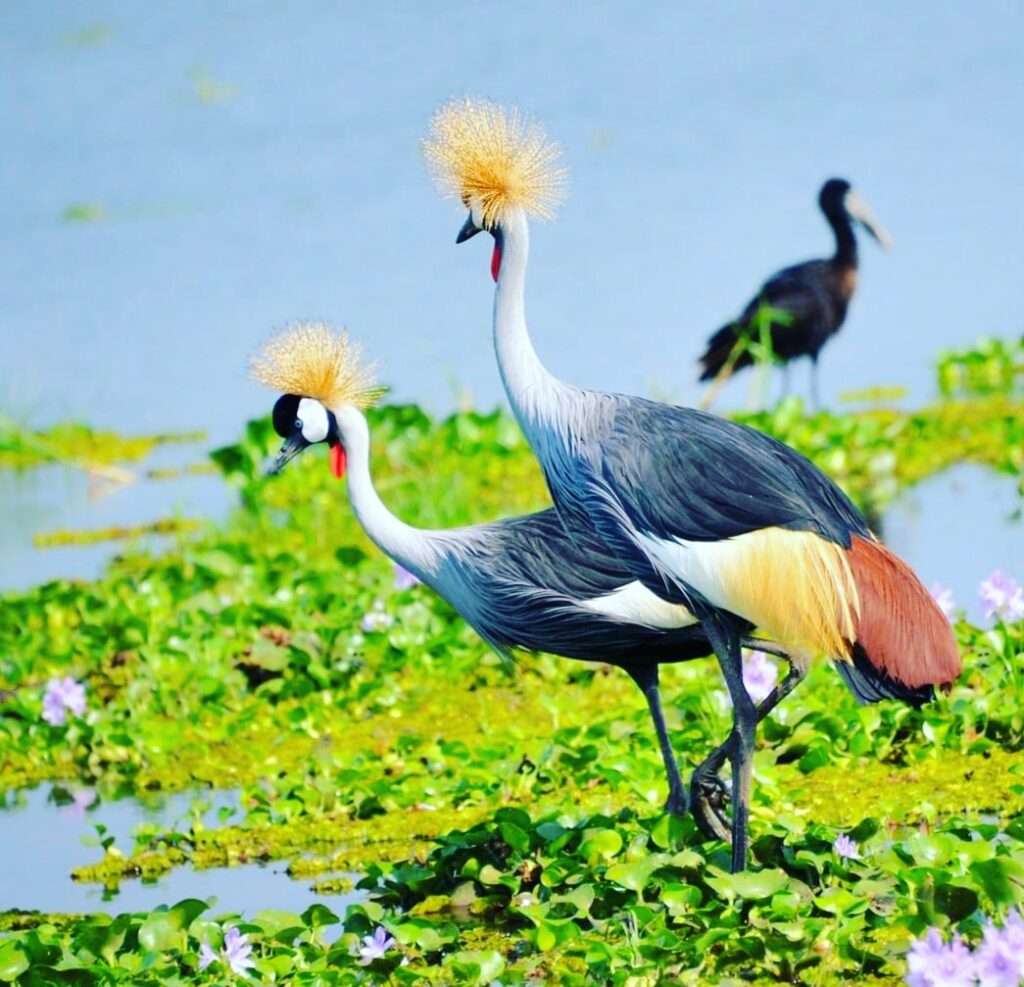
Tarangire National Park
Without doubt, the most impressive feature of Tarangire is the park’s elephant migration, when huge herds push through to Tarangire’s river system and swamps during the dry season. Due to the astonishing abundance of elephant in the park, this truly is a spectacular scene. In fact, Tarangire contains the greatest numbers of elephant in northern Tanzania! But these are not the only animals to be attracted in immense concentrations to the park’s water sources during the dry spell – and Tarangire is home to many species all year round.
There are plenty of lion and leopard in Tarangire, present throughout the year and effectively setting up camp close to the Tarangire River from June to October to be near the gatherings of game. Tree-climbing lions are fairly common too! Cheetah, however, are relatively rare. Other carnivores that roam the rolling acacia and baobab woodlands, riverine forests and dense grass, include hyena, jackal and wild dog, though wild dog are scarce and favour other areas within the Maasai Steppe.
It is the herbivores that contribute most to the overall wildlife count in Tarangire. In addition to the enormous amounts of elephant, the park is chock-full of wildebeest, zebra, eland, impala, greater and lesser kudu, dik-dik, Coke’s hartebeest, Thomson’s gazelle, giraffe, buffalo, reedbuck, waterbuck, warthog, hippopotamus, mongoose and rock hyrax! There are even a couple of unusual antelope species – the fringe-eared oryx and the gerenuk. Black rhino are very seldom seen here, but it is believed that a few individuals dwell in the more remote regions of the park.
Birds frequent Tarangire in breathtakingly big populations – with over 500 species recorded to date, the park is truly a birdwatcher’s paradise! As the topography of Tarangire is so vast and varied, there is an outstanding range of feathery friends to encounter – ostriches, eagles, lovebirds, weavers, barbets, parrots, pelicans, nightjars, starlings, babblers, and the intriguingly named bare-faced go-away bird! Be sure to pack your binoculars, if birding is your thing.
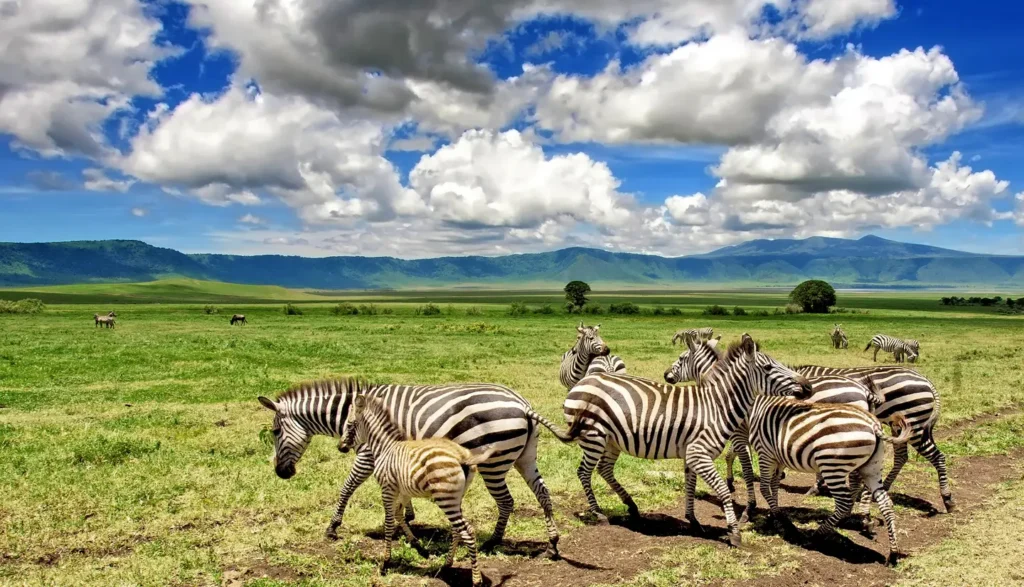
Nyerere National Park
Impressive numbers of herbivores congregate on the shores of the river and its lakes – and equally impressive concentrations of predators stalk these herds! Cats comprise lion, leopard and cheetah. Lion are particularly prevalent, simply lying in wait for near next meal! Travellers often witness a kill here. Other mammal species include hippopotamus, zebra, giraffe, sable antelope, Lichtenstein’s hartebeest, greater kudu, eland, impala, waterbuck, bushbuck, Nyasa wildbeest, kongoni – the miombo woodlands make a fantastic habitat for antelopes in particular. There are also spotted hyena, side-striped jackal, vervet monkey and yellow baboon. Nyerere boasts the largest population of wild dog in all Africa! Indeed, this is one of the reserve’s main attractions.
Keen birders are in their element on a Nyerere safari, with approximately 450 species recorded! The lakes are home to all manner of waterfowl – ducks, geese, grebes, egrets, herons, bitterns, pelicans, spoonbills, kingfishers, skimmers, cormorants, storks, ibises. Raptors include eagles, vultures, hawks, harriers, buzzards, kites, osprey. The secretary bird hunts on foot, while other ground-dwellers such as quails, guineafowl, crakes and bustards forage in the foliage. There are also gulls, plovers, doves, pigeons, lovebirds, parrots, cuckoos and bee-eaters. This is a seriously good place to be if you like your birdlife!

Lake Manyara National Park
Lake Manyara National Park is located at the bottom of the Great Rift Valley in northern Tanzania. Two thirds of the park is taken up by the Lake itself, making Manyara the smallest but also arguably the prettiest park in northern Tanzania. Lake Manyara is the first stop on the famous Northern Circuit. Located halfway between Tanzania’s safari capital, Arusha, and Ngorongoro Crater, Manyara is known for its natural beauty as well as its legendary tree-climbing lions.
Manyara is one of the busiest parks in the country as it is just off the main road to the Ngorongoro and the Serengeti, so many tourists stop off en route to the larger parks. What cannot be denied, however, is the park’s natural beauty, especially in the far south where few travellers take the time to explore. Here the Rift is at its most dramatic and the park’s famous tree-climbing lion pride takes up residence.
The vast majority of the park is made up of the Lake, which means the game-driving areas can be quite small and it can get busy – especially in the northern sections close to the entrance. We believe Manyara offers a good short introduction to safari – ideally fitted into an afternoon on the way to Ngorongoro. Manyara’s hippo pool is a great spot for a picnic lunch. For a longer stay, however, we would always recommend spending the time in Tarangire or the Serengeti.

